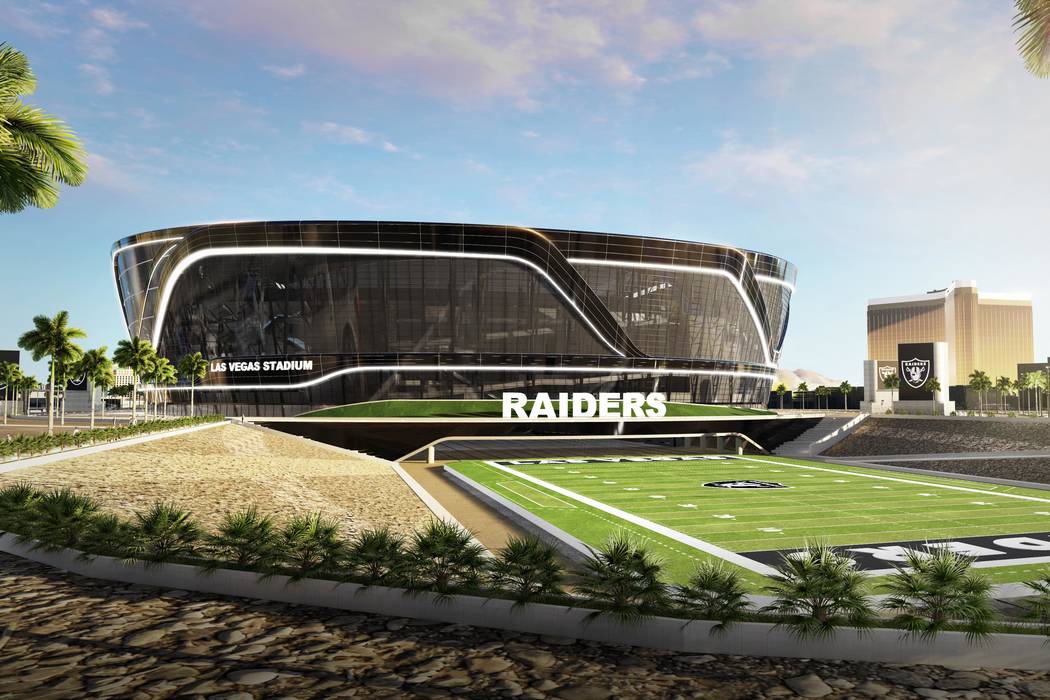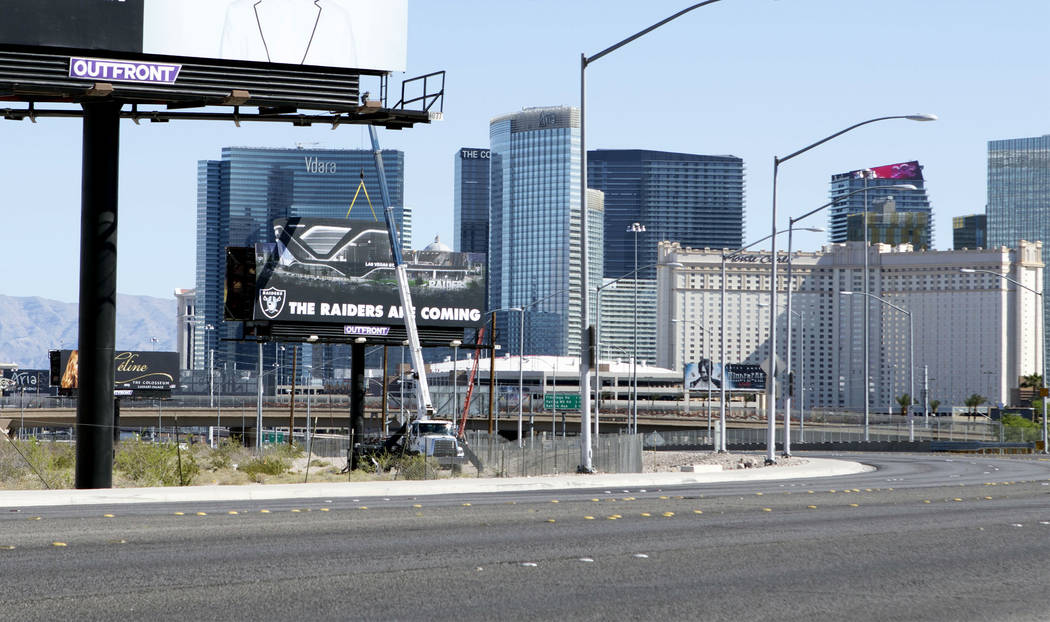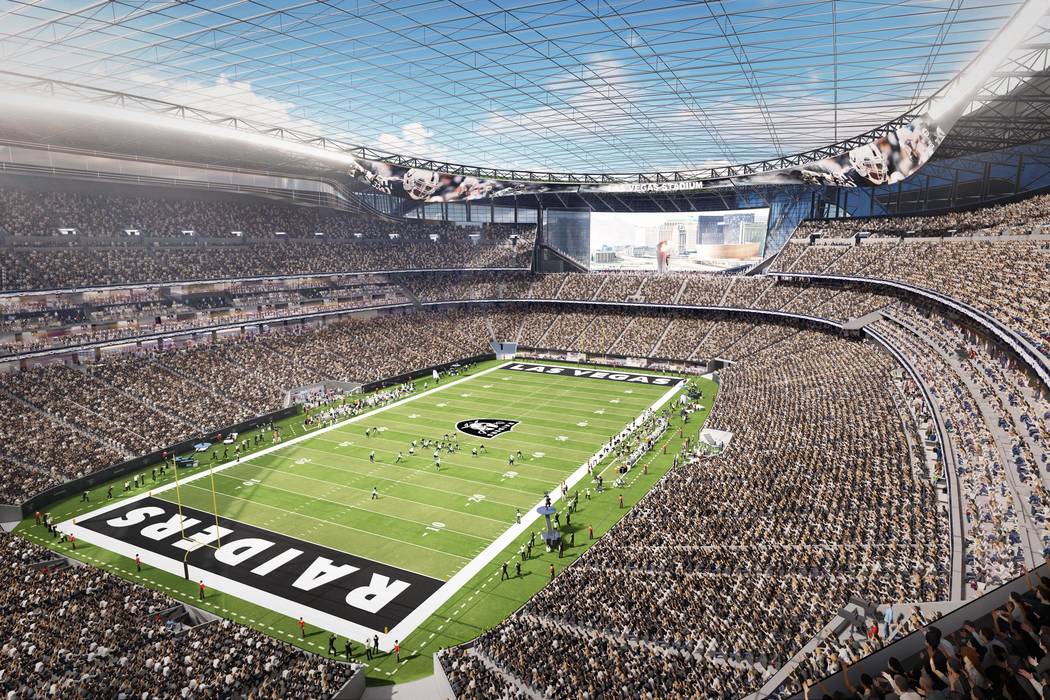Raiders close purchase on 62-acre stadium site in Las Vegas




The Oakland Raiders have closed on the purchase of 62 acres west of the Mandalay Bay resort, clearing a hurdle in the team’s bid to relocate to Las Vegas and build a stadium in time for the 2020 NFL season.
The purchase price disclosed in documents posted Monday morning on the Clark County Recorder’s Office website is $77.5 million. Early estimates projected that the Raiders would spend $100 million for stadium land.
Michael Parks, first vice president of CBRE, who brokered the deal for the Raiders with Executive Vice President John Knott, said there are no post-closing considerations on the deal.
Parks said he and Knott first approached the Raiders about the Russell site about a year ago.
“The site selection was a very public process, and there was a lot of speculation and media reports on where the stadium would go,” Parks said in a telephone interview. “This site wasn’t one of those originally mentioned. The Raiders were looking for a site in close proximity to the east side of Interstate 15. Through many months of reaching out to the Raiders directly and making sure they were aware this site was available, they decided this was their preferred site.”
Easy accessibility
Parks said the team was influenced by site accessibility from I-15 from the north and south and from Russell Road to the west as well as the view of the Strip outside the north end of the stadium. He said that if the Las Vegas Monorail is extended to Mandalay Bay as planned, it would be an easy walk for passengers across pedestrian bridges over I-15 to get to the stadium.
“Everyone has known this is the real deal, and now that they’ve actually written a check and they have control of the site, they can move ahead with their planning,” he said.
The land, four parcels between Russell Road and Hacienda Avenue and between Polaris Avenue and Dean Martin Drive, is just west of Interstate 15.
The Raiders have had an option to buy the four parcels, which consist of 29.2 acres on the south portion, 26.51 acres on the north portion, a 4.16-acre lot on the northwest corner and a 2.71-acre lot on the northeast corner. The land had a listed value of $40 million.
The listed purchaser of the property is LV Stadium Co. LLC, whose managing member is the Raiders, according to the secretary of state’s website. The seller was Nevada Land Group LLC.
The managing members of Nevada Land Group, as filed with the secretary of state’s office, include Barclays Bank PLC, New York; Credit Suisse Management LLC, New York; High Floating Rate Opportunities Fund of Highland Capital Management LP, Dallas; and Nexbank SSB, Dallas.
According to county records, the banks foreclosed on the land after a contract breach in December 2008 by Weststate Land Partners.
Lack of parking
Clark County Commission Chairman Steve Sisolak said Monday that the good news for the Raiders is that the High-Impact Project Investigation and the signing of a county development agreement already have begun.
While the Las Vegas Stadium Authority board was meeting on April 20, another meeting involving Raiders executives and county department heads was occurring simultaneously.
Sisolak said an early concern for the site is parking. There doesn’t appear to be enough room to provide the space necessary for the type of tailgating experience the Raiders would like to provide.
“There’s clearly a need for some more parking,” Sisolak said. “I’ve been advocating for the significance of ingress, egress and parking for the stadium and will continue to do so.”
That’s why Sisolak has continued to keep the Bali Hai Golf Club, once a prospective stadium site on Las Vegas Boulevard south of Russell Road, on his radar as a potential parking solution. But he isn’t sure whether the cost of that site would pencil out as economically viable for a parking and tailgate site close to the stadium.
In addition to the county and Stadium Authority reviews, the Federal Aviation Administration will be asked to weigh in on the site.
FAA’s involvement
Ian Gregor, public affairs manager for the FAA, said federal law requires developers to give the FAA the opportunity to review structures near airports to determine whether they could pose a hazard to aircraft or interfere with navigation aids.
Developers must file the application for FAA review by the earlier of at least 45 days before the start of the proposed construction or 45 days before an application for a construction permit is filed.
The FAA’s determination is a recommendation since the agency can’t rule on local building decisions, but because of the importance of county-operated McCarran International Airport to the city’s tourism economy, the FAA determination will hold sway with the commissioners.
Gregor said there is no time frame for FAA airspace reviews. The time of the review depends on whether the agency identifies issues with a proposed structure and, if so, how hard or easy it is to mitigate them. The FAA’s review of the NFL stadium for the Los Angeles Rams and Los Angeles Chargers in Inglewood, California, for example, took well over a year.
Contact Richard N. Velotta at rvelotta@reviewjournal.com or 702-477-3893. Follow @RickVelotta on Twitter.
Loan repaid
The Las Vegas Stadium Authority board has repaid Clark County close to $100,000 in loans on Monday, county spokesman Erik Pappa said.
The money, which was loaned in multiple portions beginning in January, allowed the Stadium Authority to begin operations while waiting for revenue from a hotel room tax that went into effect March 1.
The terms of the loan allowed up to $500,000 to be borrowed with a payback deadline of June 30. However the loan agreement required the Stadium Authority to reimburse the county before spending the tax money on anything else.
On Monday, the Stadium Authority paid the county $94,295.50 for the loan and another $321.73 in interest.
The loaned money was spent on a contract with county staff, a contract with research company Applied Analysis, a contract with outside legal counsel Houston-based Andrews Kurth, and insurance for the Stadium Authority, said Jeremy Aguero, a principal analyst with Applied Analysis.
— Michael Scott Davidson
Significant milestone
While the acquisition of the site marks a significant milestone for the Raiders, there’s still a mountain of paperwork to complete and questions to be answered before the team can turn the first shovel of dirt to begin construction on the 65,000-seat, $1.9 billion stadium.
Jeremy Aguero, a principal for Las Vegas-based Applied Analysis, the Las Vegas Stadium Authority’s hired staff, said there are three key tasks to complete before a groundbreaking.
Aguero said two of the hurdles involve Clark County, the completion of a High-Impact Project investigation and the signing of a county development agreement, which must be approved by the seven-member County Commission.
The high-impact investigation is required of large developments such as MGM Resorts International’s CityCenter project and Genting’s Resorts World Las Vegas plan on the Strip.
High-impact project deliberations can involve decisions on whether a new development would require the construction of additional nearby resources or the redeployment of personnel, such as building a fire station or police substation.
The county development agreement involves other infrastructure to serve the site — water, sewer, transportation, parking, roads and highways.
— Richard N. Velotta












